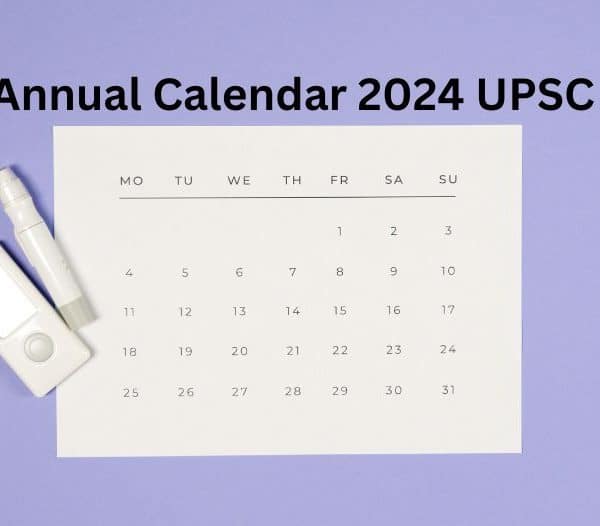If you are reading this article, then we bet that you are an aspiring IAS officer. The fact that it is one of the most prestigious jobs in our country, there’s no justification needed when the number of aspirants goes high.
UPSC exams are conducted to recruit eligible candidates for numerous civil services of the nation. An average of ten lakhs candidates sits for the UPSC examination every year out of which only 180 candidates (1:1 ratio of reserved to unreserved seats) get selected indicating the level of competition to be quite high.
IAS is the backbone of India’s bureaucracy and has immense power to form and manage society. Therefore, it’s important to select candidates who can fight all odds of the examination to take the IAS responsibility and stand against the pressure it gives.
The working hours of an IAS officer comprise numerous activities. Let’s move on to get the gist of it.
Working Hours of an IAS Officer
The official working timings of an IAS officer are 9 a.m. or 9:30 a.m. to 5 p.m. However, due to heavy duty and responsibilities, their working hours could even get extended up to 8 p.m. or 9 p.m. Someday, the working hours could last up to 14 hours/day which is tiresome! In a nutshell, per week an average of 70-80 hours are expected. So, there is no certainty in the working hours of an IAS officer.
The initial days of the journey of an IAS officer are more hectic. As they are young and enthusiastic, they can perform duty with high agility. They always have to be ready for any calls and emergencies held in their area. The work-life balance rather becomes work-work balance. Mostly the SDM (Sub-District Magistrate) and DM (District magistrate) goes through this phase.
Here’re Some more Information about the Working Hour
The working hours increase tremendously during mega-events, election time, disasters, and Law & Order situations. Even the holidays are cancelled and in case one has a pre-booked air ticket, it is of no use. Many times one has to stay away from the family to handle the designated duty.
Working in remote areas, an inspection of a particular sector, management of law, and policies—all are performed without having a fixed schedule during the phase of field postings. The good part is, after the field postings end, the life of a secretariat is much stable. The routine then becomes fixed, that is, eight to nine hours a day with five to six workdays, each week.
One can balance everything when one has the energy and devotion towards the betterment of society and no other job has the amount of power to do so.
IAS Responsibility and Duty
After reading the working hours of an IAS officer, you must be thinking about what kind of roles they have to play in such long working hours.
As you know, with high status, comes immense power. They handle the law & order, policy-making, and inspecting the implemented policies under the given area of the Indian Government.
Here is the list of top duties which are meant to be done:
1.Coordination of the work of different departments.
2.Running the revenue administration, general administration, and developmental administration. They are responsible for the smooth running of all of these administrations.
3.Collection of revenue from the area they are given to work under.
4.Resolving interdepartmental issues.
5.They are the link between civil services and the political system of the country.
6.Managing daily reports.
7.Inspection of areas and events.
8.Policy-making and inspecting the area where the policies are implemented. They are held in charge for its smooth running.
9.Field jobs or assignments are also given to an IAS officer.
10.Managing Law and Order.
11.Serving the needy and poverty-hitten people of the country.
12.They can work as a collector or secretariat.
13.Responsible for responding to natural disasters, accidents, and riots in administration.
14.Sometimes travelling is required as per the work and urgency of work.
15.Regular meetings and conferences.
Due to plenty of duties, holidays and working hours of an IAS officer often gets mixed. Get a better gist about the holidays of an IAS officer through this article. But before that, let us have a summary of the phases of the IAS journey!
Phase One
- Strict training at the Lal Bahadur Shastri National Academy of Administration (LBSNAA).
- District level training as per the allotted cadre.
Phase Two
- Training for a week at LBSNAA on an India diplomatic mission attached with foreign.
- Three months of duty as an Assistant Secretary for the Central Government.
- Joining as SDM
- Joining as Municipal Commissioner
- Joining as DM or collector
- State secretariat at Joint secretary level
- After years of experience, opting for central government services can be done.
- Becoming a Chief secretary
- Becoming a Cabinet secretary
Holidays of an IAS Officer
Holidays provided every year:
1.Gazetted or national holidays for around 20 days
2.Restricted holidays for two days
3.Casual leave or CL for eight days
4.Weekends of around 104 days
5.Pay leave for 30 days
6.Half-pay leaves for 20 days
Additional leaves given under special conditions:
1.Paternity leave: A father can take a 15 day off for each child (maximum two children)
2.Study leave: One can take a leave for studying for two to three years. The course should be related to public affairs.
3.Maternity leave: A mother IAS officer can take a leave for 180 days to take care of their newborn.
4.Adoption leave: A woman can take a leave of 180 days whereas a man for 15 days.
5.Unpaid leave: For five years
Conclusion
An IAS responsibility is huge, although leaves can be taken during emergencies. What are your plans after becoming an IAS officer? Are you preparing to enter this value-providing job?
If yes, then UPSC Pathshala has come up with personalised courses to accelerate your learning process. Having a personal mentor is the best way to learn, as their sole focus will be to guide you. They help you solve doubts and keep a track of strong and weak points which are highly important to have a hurdle-free preparation schedule.
Check out the free demo class to get assured of the mentoring methodology. Around 1,50,000 plus students have been mentored and you can be the one too!







This was such an amazing article, I really enjoyed it. This was such an informative article that helped some aspiring candidates like me to learn more about the new things in life.